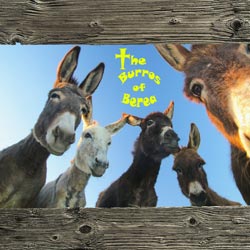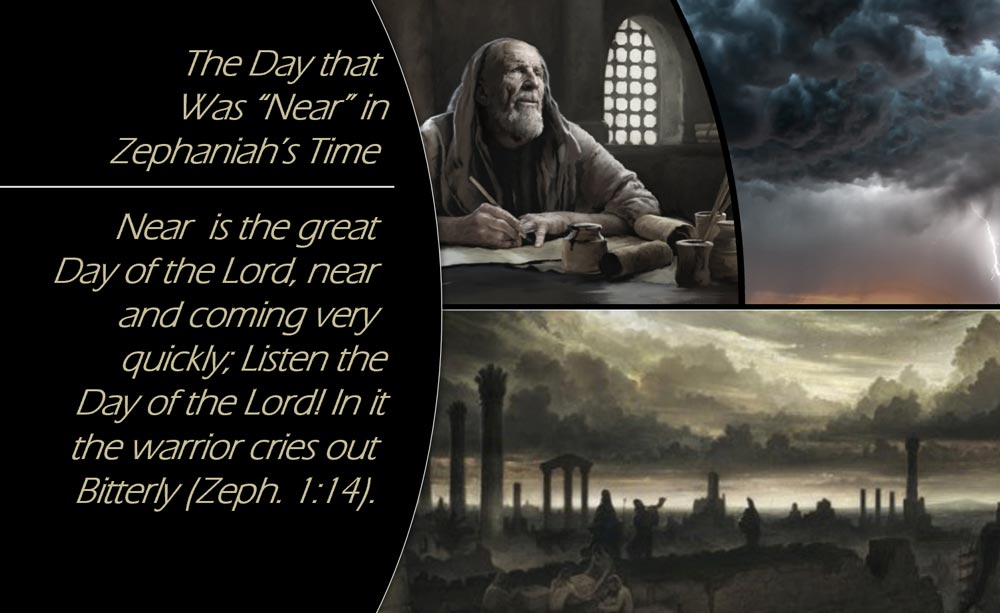Copyright © Robert E. Cruickshank, Jr (July 16, 2022)
All rights reserved
Revised Version (September 8, 2022)
Many Futurists think Zephaniah 1:14 discredits the Preterist interpretation of the time texts. If the Day of the Lord was “near” in Zephaniah’s time, and clearly not imminent, why do the New Testament time texts have to be referring to an imminent event? The misunderstanding here is two-fold.
First, it assumes there is one, singular Day of the Lord in Scripture. But, the Day of the Lord is anytime God brings judgment against any nation.
As David Chilton wrote: “The Biblical prophets saw the Day of the Lord to be fulfilled in all of God’s redemptive judgments in history against disobedient nations: it was the divine ‘day of reckoning’ against Judah, when the wicked would be annihilated and the righteous saved and blessed (Isa. 2-5; Joel 1-3); for Babylon it was the day of destruction, fire, and the collapse of the universe (Isa. 13:6-13); it was also the day when Edom would suffer God’s vengeance in bloody slaughter, in fire and brimstone, and in desolation, while God’s people are safely ‘gathered’ to Him (Isa. 34); the day when God’s great sword would drink its fill of the blood of the Egyptians (Jer. 46); indeed, ‘the Day of the LORD draws near on all the nations’ (Obad. 15). When we place these passages together, along with texts such as Zephaniah 1 and Psalm 18, it becomes strikingly clear that the prophetic term Day of the Lord means Judgment – a judgment issuing in both destruction of the wicked and salvation of the righteous” (Paradise Restored, p. 137).
Second, the context of Zephaniah 1:14 clearly supports that idea that “near” still meant “near,” even in the Zephaniah’s day. The passage is not speaking about the end of the world or even the destruction of Jerusalem in AD 70.
Zephaniah’s prophecy (640 BC) would have been about the upcoming judgment against Judah when the Babylonians would take them into captivity and destroy the temple and the city (586 BC). In other words, it’s about the first destruction of Jerusalem back in Old Testament times. We’re looking at 54 years. This easily fits the framework of a “Day of the Lord” that was “near.”
The context itself bears this out. It’s specifically a judgment against “Judah” and “the inhabitants of Jerusalem” (Zeph. 1:4a). God says He will “cut off the remnant of Baal from this place” along with “the names of the idolatrous priests” (Zeph. 1:4b). I don’t think there are any Baal worshipers or idolatrous priests in modern-day Jerusalem! This is a prophecy about something that happened long ago from our perspective, but it was the near future in Zephaniah’s day. As it should be. Why would Zephaniah and his audience even care about events thousands of years removed from their own lifetime?
In verse 5, God is going to judge “those on the house tops” who “bow down to the host of Heaven.” This is what God warned them about in Deuteronomy 4:17. They were not to bow down to the sun, moon and stars and all the host of heaven. These were perceived by the ancient people as the gods allotted to the other nations. I don’t think anyone in modern-day Israel is going on their rooftops and bowing down to the sun, moon and stars and all the host of heaven.
As John Gill commented on verse 5: “And upon them that worship the host of heaven upon the house tops. The sun, moon, and stars, which some worshipped upon their house tops; the roofs of their houses being flat, as the roofs of the houses of the Jews generally were; from hence they had a full view of the host of heaven, and worshipped them openly; and fancied, the nearer they were to them, the more acceptable was their service; see Jeremiah 19:13.” Zephaniah 1:5 Commentaries: “And those who bow down on the housetops to the host of heaven, And those who bow down and swear to the LORD and yet swear by Milcom, (biblehub.com)
Additionally, most translations bear out that the people of this time period swore by Yahweh while, at the same time, swearing by “Milcom” (Zeph. 1:5). According to the Dictionary of Deities and Demons in the Bible, Milcom was a “deity of the ammonites” and was the “god of the underworld and fire” (DDD, p. 575). We know from Isaiah that God’s ancient people had a problem in this area since they had “made a covenant with death” (Isa. 28:18; see: K. van der Toorn, “Echoes of Judaean Necromancy in Isaiah 28:7-22, Zeitschrift für die Alttestamentliche Wissenschaft, Volume 100 [2], January 1, 1988).
Most Jews today, in fact most people today for that matter, don’t worship Baal. And they don’t go onto to their roof tops to get as close as they can to the host of heaven. Nor do they make a pact with the god of the underworld.
In short, the passage isn’t about modern Israel, or even first-century Israel, it’s about God’s judgment against ancient Judah (in the Old Testament) for worshiping false gods and playing with necromancy. This judgment came 54 years after Zephaniah prophesied. “Near” clearly meant “near” in Zephaniah’s day, just as it did in the New Testament, and just as it does today.
_______________________________________
1 My friend, Michael J. Sullivan, narrows the time down even more: “Didn’t Zephaniah prophesy around 627BC and Babylon’s invasion was 606BC with the Temple being destroyed in 586BC. So, 627 – 606 is 21 years and that is “near” and 627 – 586 is 41 years and that is still ‘near’” (Facebook Comment, July 16, 2022). If Mike is correct here, the time period is much shorter. I was going by the dates given by William Cox in Biblical Studies in Final Things (p. 61). Mike is using more current research which makes the point even stronger. Either way, the Day of the Lord was not in the far-distant future (thousands of years away) for Zephaniah and his audience.

